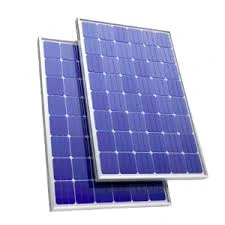three phase inverter
The Three-Phase Inverter Revolutionizing Power Conversion
In the landscape of modern electrical engineering, three-phase inverters have emerged as pivotal components in the realm of power conversion. These devices play a crucial role in transforming direct current (DC) into alternating current (AC), which is essential for a plethora of applications, from renewable energy systems to industrial motor drives. Understanding the functionality, applications, and advantages of three-phase inverters is essential for anyone involved in electrical systems design and energy management.
What is a Three-Phase Inverter?
At its core, a three-phase inverter is a power electronic device that converts DC power into three-phase AC power. Using a combination of switches—typically Insulated Gate Bipolar Transistors (IGBTs) or MOSFETs—the inverter generates a three-phase output that can be utilized in various applications. The three-phase aspect refers to the simultaneous generation of three alternating outputs that are phase-displaced by 120 degrees, which is integral to ensuring balanced loads and reducing voltage fluctuations.
How Does It Work?
The operation of a three-phase inverter can be broken down into several key steps
1. DC Input The inverter receives direct current input, typically from sources such as batteries, solar panels, or rectifiers. 2. Pulse Width Modulation (PWM) The inverter utilizes PWM techniques to switch the transistors on and off at high frequencies. This modulates the average voltage and creates a waveform that approximates the desired sinusoidal output.
3. Output Generation The three-phase output is achieved by controlling the timing of the switches, ensuring that sinusoidal waveforms are produced for each of the three phases, phase-shifted by 120 degrees.
4. Smoothing Filters may be used post-inverter to smooth out the output waveforms, minimizing harmonics that can lead to inefficiencies in electrical systems.
Applications of Three-Phase Inverters
The versatility of three-phase inverters means they are integral to various applications
- Renewable Energy Systems In solar energy systems, three-phase inverters convert the DC generated by solar panels into AC, enabling connection to the grid and powering homes and businesses. They are also employed in wind energy systems.
three phase inverter

- Industrial Drives Many industrial motors operate on three-phase AC. Inverters provide variable frequency drives (VFDs) to control motor speed and torque, optimizing performance and efficiency.
- Energy Storage Systems In conjunction with batteries, three-phase inverters facilitate energy storage and management, allowing users to store excess energy during low-demand periods and discharge it during peak demands.
- Electric Vehicles (EVs) Inverters are crucial for converting the DC from EV batteries into AC for driving the electric motors, thus playing a key role in the functioning of electric vehicles.
Advantages of Three-Phase Inverters
The adoption of three-phase inverters comes with numerous benefits
- Efficiency They are designed to operate with high efficiency, reducing energy losses during conversion and extending the life of electrical components.
- Stability and Balance By providing three-phase output, these inverters ensure balanced loads, which helps in minimizing fluctuations in voltage and enhances the overall stability of electrical systems.
- Reduced Harmonics The use of PWM and advanced filtering techniques allows for the reduction of harmonics, which can lead to less energy wastage and prolong the lifespan of electrical equipment.
- Scalability Three-phase inverters can be scaled up to cater to larger systems, making them extremely versatile and applicable in both residential and industrial contexts.
Conclusion
Three-phase inverters stand as a cornerstone in the evolution of power conversion technologies. With their ability to efficiently transform DC into three-phase AC power, they empower a range of systems from renewable energy sources to industrial applications. As technology advances, the role of three-phase inverters will likely continue to grow, contributing to a more sustainable and efficient energy landscape. Understanding their operation, applications, and advantages is crucial for anyone looking to innovate in the field of electrical engineering and energy management. Whether it's in renewable energy systems or industrial applications, the three-phase inverter undoubtedly marks a significant step forward in power conversion technology.
-
String Solar Inverter: The High-Efficiency Solution for Smart Solar EnergyNewsJul.14,2025
-
Revolutionizing Rooftop Energy with the Power of the Micro Solar InverterNewsJul.14,2025
-
Power Independence with Smart Off Grid Solar Inverter SolutionsNewsJul.14,2025
-
On Grid Solar Inverter: Powering the Future with Smart Grid IntegrationNewsJul.14,2025
-
Monocrystalline Solar Panels: High-Efficiency Power for the Future of Clean EnergyNewsJul.14,2025
-
Bifacial Solar Panel: A Smarter Investment for Next-Generation Energy SystemsNewsJul.14,2025







